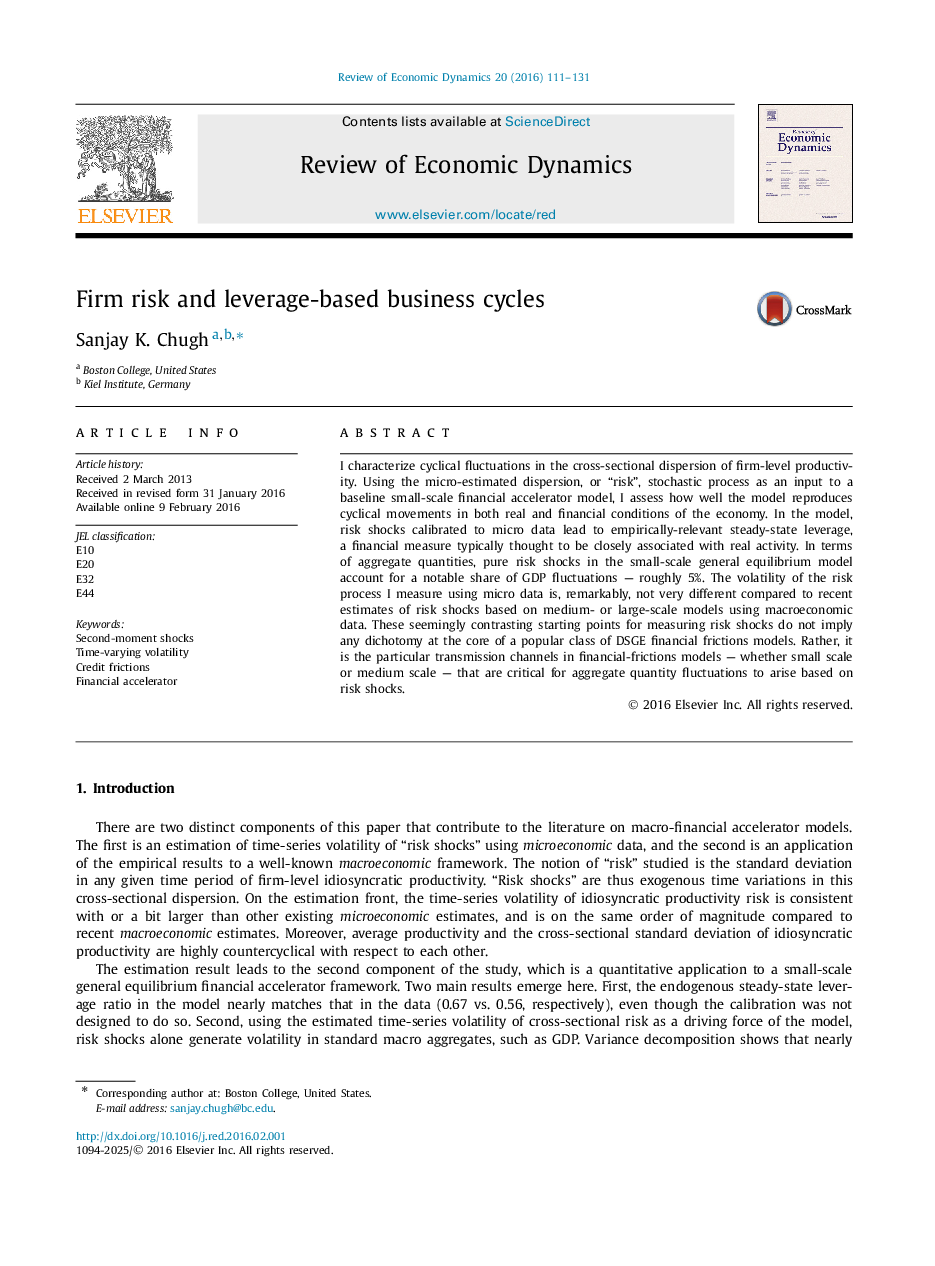| Article ID | Journal | Published Year | Pages | File Type |
|---|---|---|---|---|
| 986304 | Review of Economic Dynamics | 2016 | 21 Pages |
I characterize cyclical fluctuations in the cross-sectional dispersion of firm-level productivity. Using the micro-estimated dispersion, or “risk”, stochastic process as an input to a baseline small-scale financial accelerator model, I assess how well the model reproduces cyclical movements in both real and financial conditions of the economy. In the model, risk shocks calibrated to micro data lead to empirically-relevant steady-state leverage, a financial measure typically thought to be closely associated with real activity. In terms of aggregate quantities, pure risk shocks in the small-scale general equilibrium model account for a notable share of GDP fluctuations — roughly 5%. The volatility of the risk process I measure using micro data is, remarkably, not very different compared to recent estimates of risk shocks based on medium- or large-scale models using macroeconomic data. These seemingly contrasting starting points for measuring risk shocks do not imply any dichotomy at the core of a popular class of DSGE financial frictions models. Rather, it is the particular transmission channels in financial-frictions models — whether small scale or medium scale — that are critical for aggregate quantity fluctuations to arise based on risk shocks.
